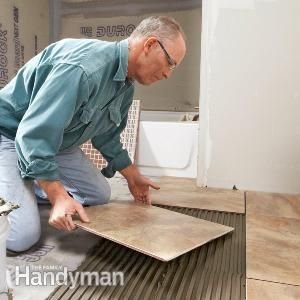Surface preparation is the process of treating a material's surface to enhance adhesion and improve its performance before applying coatings, adhesives, or joining it with other materials. This process involves cleaning, removing contaminants, and potentially modifying the surface's profile to optimize bonding and minimize corrosion.
When selecting and laying tiles, consider factors like size, material, and layout patterns to suit the space and aesthetic. Large tiles can make smaller spaces feel more open, while smaller tiles offer more slip resistance on the floor. Tile layout patterns like brickwork, herringbone, or diagonal can add visual interest.
Adhesive application involves using a substance to create a bond between two materials, resisting their separation. This can be done in various industries like construction, automotive, and aerospace, and for purposes like bonding, sealing, and coating. The application method depends on the adhesive type, the materials being bonded, and the desired outcome.
Installation techniques encompass a wide range of methods for integrating systems, software, or physical objects. These methods can be broadly categorized into manual, automated, and specialized approaches, depending on the specific application and context. Manual installations involve user interaction and step-by-step processes, while automated methods utilize scripts and tools to streamline the process. Specialized techniques address unique challenges in areas like pipeline installation, subsurface utility networks, or software deployment.
Grouting involves filling the gaps between tiles, providing a finished look and sealing the installation for longevity and water resistance. Finishing, in this context, encompasses the final steps to ensure a clean and polished appearance, including removing excess grout and smoothing joints.





